Ever since its initial inception, Mazda’s rotary engines (like an RX8 engine) have been a fan favorite. It was thought up as an alternative to the reciprocating piston engine. In fact, to this date, it has been the only other commercially plausible engine type. Granted, only Mazda believed it, as it’s the only surviving manufacturer to develop and apply contemporary rotary engine designs.
- Facts & Stats
- Tuning & Upgrades
- Getting Big Power
- Common Problems
- RX8 vs RX7
- Frequently Asked Questions (FAQs)
People love the rotary engine for its naturally enthusiast-centric demeanor. Lightweight, simple, and rev-happy. It’s also immensely efficient at producing horsepower for its modest displacement. Of course, there’s also the huge aftermarket available for the 13B, the most beloved of the rotaries. It’s also an engine that responds very well to forced induction, much to the joy of RX7 enthusiasts.
The rotary engine also contributed to the cool factor of the exceptional Mazda Cosmo. And if it wasn’t for the rotary engine, Mazda wouldn’t have built their Le Mans legacy in the form of the stupendous 787B.
Thus, it’s fair to say that if Mazda hadn’t adopted the rotary engine, it wouldn’t have garnered as big a fanbase. Anyone who wanted the rotary experience had to buy a Mazda. This, understandably, has driven the prices of classic rotary Mazdas way up.
Mazda RX8 Engine
If one wanted an affordable, easy-to-find entry into the rotary world, you only have one option – look up your classifieds and find an RX8 for sale. The RX8 is a bit of a black sheep in the rotary family, and there are reasons for it.
The 13B-MSP (multi-side ports), colloquially referred to as the RENESIS, was introduced alongside the production RX8 back in 2003. And initially, people loved the engine. In fact, the RENESIS even received multiple awards for its innovative design and surprising efficiency.
One big thing that people quite liked about the RENESIS is its efficiency. Being naturally aspirated, it didn’t produce comparable power or torque to its predecessor. However, to combat that, Mazda first redesigned the housing ports. This reduced overlap, thus increasing the engine’s effective compression ratio, and improving output and efficiency.
Secondly, Mazda developed a different way to seal the rotors featuring low-height apex seals. This contributed to less parasitic friction, thus allowing for more power to be squeezed without burning as much fuel.
This meant that while the RENESIS is rated by Mazda at just 1.3-liter, it produces considerable power. It is also quite versatile in its output. In fact, the RENESIS came in configurations ranging from 189 to 238 horsepower with 216 Nm of torque.
Mazda Rotary Engine
Of course, the power output isn’t the main focus of the RENESIS. The main goal of the RENESIS is to address the issue plaguing Mazda’s other existing rotary engines – emissions. They managed to coax 18 MPG and 267 g/km of CO2 out of the engine. It wasn’t outstanding, but at least it coped with the increasingly stringent emissions standard internationally.
More importantly, the revised design of the RX8’s engine enabled a naturally aspirated design. The RX8 isn’t meant to be a successor to the RX7. It’s a new model by Mazda built to appeal to younger prospects. The naturally aspirated nature made power delivery satisfactory, yet linear and predictable.
It also helped Mazda keep the weight down in the RX8. This proved important, as even without the complex sequential turbocharging system of the 13B-REW, the RX8 still ended up weighing 1.3 tonnes. That’s over 100 kg heavier than the RX7.
By ditching any sort of complications, Mazda maintained a near 50-50 weight distribution in the RX8. The tiny packaging of the RENESIS allowed it to be mounted before the front axle, thus achieving a front-mid engine layout in the RX8. Crucial to the RX8’s well-regarded handling characteristics.
With all that said, it’s precisely the aforementioned modifications Mazda made to the engine that made enthusiasts apprehensive. The lack of factory forced induction with a vastly different engine design meant that a new aftermarket must be nurtured.
Mazda 13B-MSP (RENESIS) Facts and Stats
For most rotary enthusiasts, the 13B-REW is a more accessible and convenient performance option. Even by the end of the RENESIS’s life, the aftermarket isn’t quite comparable to the turbocharged 13Bs.
With that said, this doesn’t mean that the RENESIS isn’t tinkered with. Any rotary engine is beloved by the rotary crowd for its polarising charm. And enthusiasts are always intrigued to experiment to see how far they can push an engine.
The RENESIS came in dozens of configurations. It’s mainly dependent on the transmission and purpose of the engine. It’s quite surprising how flexible the RENESIS is.
1. 4-port & 6-port
Initially, the RX8 came with two different power outputs available. You either went with the standard 4-port standard output or the 6-port high output variant. Power is rated at 189 and 237 horsepower respectively. The former came with a 5-speed manual and 4-speed automatic, while the latter was only available with a 6-speed manual.
Intriguingly, as of 2006 AT RX8 models ditched the 4-speed automatic. In lieu, Mazda designed a 6-speed automatic with paddle shifting for the engine. This allowed Mazda to revise the engine variant, offering 212 horsepower in this configuration.
All RENESIS variants produce 216 Nm of torque, and the torque you have to rev for. Interestingly, in the UK, the automatic variant was never offered. By 2008 in the facelift model, the standard variant was forsaken altogether. These post-facelift RX8s are known as the RX8 S2.
Moreover, with the 2008 facelift came numerous development improvements. Shorter ratio transmission, reinforced chassis, and revised suspension geometry. The engine received a third oil injection port at both housings. This is to feed oil to the middle of the rotor face.
2. Electric Metering Oil Pump (EMOP)
A newly designed oil pump is fitted as well. With that came increased lubrication system pressure with a new oil filter design. Mazda also took the opportunity to develop an Electric Metering Oil Pump (EMOP) that replaces the existing mechanical one. This allows for more precise control to lubricate the apex seals.
3. Catalytic Converter
Critically, Mazda fitted the revamped RENESIS with a new catalytic converter. It had reduced clogging issues which is a major oversight in the first generation RENESIS. It shouldn’t go without saying that if you want an RX8, stick with the Series 2s.
4. Exhaust Port Design
The big thing that Mazda changed in the RENESIS is its port design. The older 13B-REW featured peripheral exhaust ports. The new 13B-MSP instead uses side exhaust ports. This effectively eliminated overlap. The lack of overlap improved the emissions and low-end torque of the RENESIS.
Reverting to side ports meant that the RENESIS flowed less exhaust volume than the 13B-REW. Mazda combats this by introducing two exhaust side ports per rotor, thus actually increasing the port area for the exhaust. Delayed exhaust port opening lengthened the thermal expansion cycle and thus improved thermal efficiency. The port design also retained some unburned gas within the chamber for reignition.
5. Intake Ports
Migrating to side ports granted more freedom in optimizing the intake port. Both the 4 and 6 port RENESIS have ~30% larger intake port area than its predecessor. Mazda also delayed the intake port closing time to allow for greater intake volume. In the 4-port, you have 2 intake ports per rotor; in the 6-port, there are additional auxiliary ports.
6. Sequential Dynamic Air Induction System (S-DAIS)
To really capitalize on the improved engine airflow, the RX8 implements a complicated intake system. Named the Sequential Dynamic Air Induction System (S-DAIS), it’s a fairly complex intake manifold designed to harness every bit of the RENESIS’s charging volume. The 6-port will be referred to from here on.
The manifold has 5 valves in total, with an additional variable fresh air duct. One is for variable dynamic intake effect (VDI), and the other 4 are secondary and auxiliary intake valves respectively. It operates over 5 stages, as eminent from the photo below.
The VDI valve is between the four main intake runners. It only operates at WOT 7,250 rpm to facilitate quicker intake pressure charging. This VDI effect essentially pressurizes and forces the air into the RX8’s engine. It opens at 5,750 rpm in the 4-port. This VDI effect essentially lengthens the manifold for better mid-end torque.
Interestingly, the additional variable fresh air duct is exclusive to the 6-port variant. At 5,500 rpm the air duct opens to reduce the air travel distance. The exhaust side is much simpler, but Mazda has designed a high-flow, almost straight-through exhaust system to reduce flow resistance.
7. Flywheel Weight
Because the 6-port has to rev much higher (8,500 rpm!) for its power, work has been done to make it as effortless as possible. Mazda reduced the weight of each rotor by 5% through material reduction. The flywheel weight is reduced by 15%.
8. Injectors
Sufficient, accurate, and prompt fueling is imperative for rotary engines. In the RENESIS Mazda incorporated 6 injectors total, 3 per rotor. They’re injected in stages with 2 primary injectors and 1 secondary injector per rotor. The facelift RENESIS however reverted to a 4 injector design, with 1 primary and 1 secondary per rotor.
9. Electronic Throttle Body
An electronic throttle body is used for a tweakable throttle profile. This essentially allows the ECU to manipulate engine torque in response to road conditions and driver demand. There are 2 spark plugs per rotor for a more complete combustion process.
All of the measures taken above are to realize a more responsive, rewarding driving experience. People report that the RENESIS actually has more low-end punch than they were expecting. This is no doubt thanks to Mazda’s optimization for daily drivability.
The most impressive quality of a rotary engine is its relative simplicity. This means that the RENESIS with all of its ancillaries weighs just 112 kg. Not bad for the amount of power it’s putting out.
Modified Mazda RX8
It’s often recommended that you don’t try to modify your RX8’s engine if you don’t acknowledge the consequences. The RENESIS even when stock is a plenty capable engine provides a balance between reliability and performance.
You might question why since conventionally Japanese sports cars are well-known for being mod-friendly. However, the RENESIS is different. It’s decidedly expensive to modify while providing less in return than its peers.
The thing is, in its naturally aspirated configuration, Mazda has done an incredible job at extracting power from the RENESIS. I’m here to provide you with an overview of your options only. You’re still advised to research the mods you’re about to do thoroughly beforehand.
It’s worth noting that you can expect more or less the same yield from Series 1 and 2 RX8s. In many areas, the facelift and pre-facelift engines are identical. Also if your RX8’s engine is still covered, tinkering around with it generally gives a reason to nullify the warranty.
1. Performance Intake
Where most people start modding their car. Because Mazda has spent so much time on the RX8’s intake system R&D, aftermarket intake systems aren’t necessarily worthwhile.
The consensus is that the default intake system in the RX8 is stellar. There are only two aftermarket cold air intakes worth your while. One by AEM and the other by Mazdaspeed. These are in truth the same cold air intake with different branding on them.
You can find the AEM cold air intake system for around $400 new. The main reason that it makes power is that it’s a genuine cold air intake. It relocates the Renesis’s fresh air intake to the bumper, in front of the radiator. AEM reports a return of 8 additional horsepower at ~7,000 rpm with their cold air intake.
What causes most aftermarket cold air intake to lose power is the MAF sensor placement. The stock air intake has a straight flow into the MAF sensor with a mesh screen in front for laminar flow and most cold air intake systems fail to maintain that. It can cause the MAF sensor to provide subpar readings, so the ECU delivers inaccurate fuel and ignition timing.
What Are The Best Mazda RX8 Performance Intakes?
An alternative to the AEM system is the Racing Beat REVi intake. It’s engineered to introduce too much suction noise while being an improvement over stock. The price is around the same as the AEM system. You can expect an increase of 5-6 horsepower near the redline.
A valid reason to replace the stock air intake system is to increase the intake noise. Stock intake systems tend to muffle intake noise for refinement. Changing to an aftermarket cold air intake will remedy that. Besides, there will be broader access for maintenance work when you ditch the clunky stock airbox.
The K&N drop-in filter offers little improvement over the stock filter. Its filtering capability might also be inferior to the stock filter, with some reports of foreign particles slipping through and destroying the engine. Not quite worth the money.
2. Performance Exhaust
If you’re looking to make more power, the exhaust is where you’ll want to look. In the RX8, the main exhaust chokepoint is the catalytic converter. The stock exhaust system flows enough for the originally intended output.
Therefore, if you’re looking for power, you’ll be tackling the mid-pipe. And the most recommended mid-pipe for the RX8 is the BHR single-resonated mid-pipe. It has no packing material to fail, it’s built well and it actually controls the drone and raspiness of the RENESIS.
Take note that most mid-pipes will eliminate your catalytic converter. Most aftermarket catalytic converters (for more insight, check out our explainer on catalytic converter Isuzu NPR and the Crown Vic catalytic converter) won’t be durable enough for the RENESIS, and they’ll likely fail emissions in the end. So if you must have a cat, you’re essentially stuck with the original Mazda offering.
If you intend to get a tune, then a good long-tube header is the way to go. The main point is to remove any exhaust restrictions. Do get your exhaust heat-shielded since the RENESIS runs very hot. BHR makes them, and it’s $1,600.
If you rather keep the air injection system of your stock exhaust though, then Racing Beat produces a drop-in replacement stainless steel header. Power gain would be minimal, but it weighs much less than the stock system. It also maintains the stock catalytic converter if needed.
For the catback, it’s more of a personal preference. A catback system significantly alters the RENESIS’s exhaust characteristic. You’d have to do your own research to see which one suits your taste more.
3. ECU Tuning
Once you’ve made all these supporting mods, an ECU tune will suitably cap it off. You’ll end up with a delightful RX8 with more poke and character for B-road thrashing.
There are 2 main methods for tuning your RX8 while retaining the stock ECU. MazdaEdit and VersaTuner, both work for S1 and S2 RX8s. Piggybacks or methods that try to ‘trick’ the ECU (such as ECU chips) are insufficient. The stock ECU figures things out quickly and will negate these tunes quickly.
COBB AcessPORT used to be viable, but now they’ve dropped support for any naturally aspirated cars. It also only works with the Series 1 ECUs, the S2s are too different.
Be sure that you find someone who is a specialist in rotaries and familiar with the RENESIS. Tell your tuner everything that you’ve done to your car beforehand. Prices depend on your area and your method of tune. Generally, you can expect a gain of ~10 horsepower, depending on your RX8’s mods.
4. Miscellaneous Mods
There are also modifications that don’t impact engine output at all but can provide a sportier driving experience. If you want to improve engine response with minimal drawbacks, then a lightened flywheel is the way to go.
When you alter the flywheel weight, you are influencing the inertial balance of the drivetrain. Less weight to rotate means the engine revolves more easily. However, momentum is also reduced. So your engine revs and loses its revolutions quicker. This noticeably improves the engine’s feel for spirited driving.
However, there are some instances where more inertia is better. More inertia can in effect make the car easier to drive. The effect of a steep hill is much more pronounced with a lightened flywheel, and starting from a stop will be trickier. Those are generally things you can get around by being more skillful with your clutch though, but you may put more wear on your clutch as a result.
The less recommended method to lighten your rotational weight is via the pulleys. Converting to lightweight aluminum pulleys is generally inconsequential while underdriving your ancillaries have their own adverse impact. The A/C compressor is one you can afford to underdrive though. It’s a major parasitic drain, and even when underdriven you still have air conditioning, just not efficacious.
Due to the nature of a 2-rotor engine with an eccentric shaft, the main pulley is also very light from the factory. Therefore, there’s no need to replace it.
Big Power
If you’re looking to really push the limits of your RENESIS, then forced induction is where you must look. It’s a huge topic to cover, and it alone deserves an article. If you’re keen to turbocharge (turbo kits), supercharge, or even go for nitrous, take a thorough read here and here first. If you are looking to swap the engine on your RX8 we have a guide for that also. A lot of people choose an LS engine swap, read our detailed guide before you go down this route.
There’s also the possibility of porting the RENESIS for more overall charge flow. Even now porting RENESIS engines is mostly experimental. Racing Beat does offer a street port template for the RENESIS for potential DIY porting. If you want it done properly though, there are experts with CNC machining methods that can carry out porting jobs. Bridge and full peripheral porting have also been done on the RENESIS.
RX8 Reliability
Here’s the truth, the RENESIS isn’t exactly known for its reliability. The engine itself is actually quite dependable. However, it’s built with a few major design oversights that now contribute to its infamy for unreliability.
If you plan to run your RENESIS past 100,000 miles, be prepared to carry out meticulous preventative maintenance. After all, while the RX8 is an affordable car, it’s still a sports car. Sports cars tend to demand more attention from the owner.
Early RX8s rapidly gained notoriety due to inadequate oiling within the rotor. This accelerated wear and caused premature engine failure. Later ECU flash revisions remedied this issue. That’s only part of the story, however.
RX8 Engine Problems #1: Ignition Coils
Early on, people didn’t know how often the RENESIS’s ignition coil failed. See, there are 4 coils for 4 plugs, but in a rotary engine, these coils all fire 3 times per revolution. The ignition coils just aren’t durable enough for the RENESIS.
However, these coil troubles are misdiagnosed frequently, and dealers often end up replacing the engine under warranty. Those supposedly ‘dead’ engines are then rebuilt into remanufactured engines. And those had horrifying quality control with their own faults. So now early RX8 owners now received a poorly rebuilt engine with tons of issues. They think that the RENESIS just isn’t reliable.
RX8 Engine Problems #2: Compression
Therefore, it’s recommended that before you buy an RX8, do a compression test. It’s a quick way to determine health and run from engines with poor compression.
RX8 Engine Problems #3: Oil (3,000 Miles Per Change)
More than that, the RENESIS is just an engine that needs a lot of upkeep and attention to be reliable. Most importantly, use quality oil, but fully synthetic isn’t necessary. Frequent oil changes are much more important though, with most owners recommending around 3,000 miles per change. Rotaries burn oil to lubricate their numerous rotor seals, so it’s critical to feed the engine fresh oil all the time.
RX8 Engine Problems #4: Fuel Flooding
Also, the RENESIS is known to be prone to fuel flooding. This is usually due to weak electrical components causing the engine to not crank over quickly enough. Thus fuel quickly accumulates and wash out the rotor. Weak ignition components are common culprits, so replace your coils, HT leads, and plugs every 30,000 miles. They can fail sooner than 30,000 miles, albeit it’s rare.
RX8 Engine Problems #5: Cooling
Adequate cooling is absolutely imperative for the RENESIS. It’s an engine that produces lots of heat. Any failed cooling system components can cause rapid engine failure. The stock gauge cluster coolant temperature needle doesn’t move past the middle until the engine is overheating (~115C). Buy an OBD2 gauge to more accurately monitor your engine for cheap.
It’s recommended that you use the Mazda FL-22 coolant, flushing it every 2 years or every 60,000 miles. Otherwise, perform annual coolant flushes. Timely coolant flushes prolong component life. Regardless, they fail with time. Thermostats fail often, and those are around $70. The uprated 78C thermostats are recommended for more headroom. Too low and the CEL will light up.
RX8 Engine Problems #6: Catalytic Converter
Another important failure point is the catalytic converter. Poor ignition systems dump unburnt fuel into the cat, which clogs it very quickly. A clogged cat causes heat to localize upstream. This can result in a failed O2 sensor, cooked rotor seals, accelerated oil wear, overworked cooling system.
With all that said, if you keep on top of your RX8’s maintenance, the RENESIS can prove to be quite robust. That said, you should definitely give this and this thread a read-through to really grasp the whole RX8 ownership experience.
RX8 Engine Problems #7: Apex Seals
Apex seals are a notorious problem for the Mazda RX-8. These are thin pieces of steel that seal the edges of the rotary engine’s rotor against the housing, ensuring proper compression. If the apex seals wear down or break, the engine will lose compression and power.
A lack of power, poor fuel economy, and excessive smoke from the exhaust are all signs of failing apex seals. Regular maintenance and not over-revving the engine can help prolong the life of the apex seals.
RX8 Engine Problems #8: Carbon Build-up
The rotary engine in the RX-8 is more prone to carbon build-up than piston engines. Carbon build-up on the rotors, housing, and spark plugs can lead to reduced performance, rough idling, and even engine failure. It’s important to regularly check and clean these components to avoid excessive carbon build-up. Also, driving the car hard occasionally can help clear out some of the carbon deposits.
RX8 Engine Problems #9: Spark Plugs
The RX-8 requires special spark plugs designed for rotary engines. These plugs need to be changed more frequently than in a conventional engine, typically every 20,000 to 30,000 miles. Using the wrong spark plugs or not changing them often enough can lead to poor engine performance, misfires, and even engine damage. It’s critical to use the correct spark plugs and change them at the recommended intervals.
RX8 Engine Problems #10: Engine Mounts
Engine mounts on the RX-8 are known to fail, leading to excessive engine movement and vibration. This can cause damage to other components in the engine bay and affect the car’s handling. It’s important to regularly check the condition of the engine mounts and replace them if necessary. Upgraded engine mounts are available that provide better durability and performance.
RX8 Engine Problems #11: Starter Motor
The RX-8’s starter motor can wear out over time, leading to difficulty in starting the engine. A slow cranking engine or a clicking sound when trying to start the car are signs of a failing starter motor. It’s important to address this issue promptly as a faulty starter motor can lead to a completely dead engine.
RX8 Engine Problems #12: Fuel Pump
The fuel pump in the RX-8 can fail, leading to poor engine performance or the engine not starting at all. Symptoms of a failing fuel pump include engine hesitation, stalling, and a lack of power. It’s important to regularly check the fuel pressure and replace the fuel pump if necessary.
RX8 Engine Problems #13: Water Pump
The water pump circulates coolant through the engine to keep it cool. A failing water pump can lead to engine overheating and potential engine damage. Signs of a failing water pump include coolant leaking from the pump, a squeaking noise from the pump, and the engine running hotter than usual. It’s important to regularly check the condition of the water pump and replace it if necessary.
RX8 Engine Problems #14: ECU Issues
The Engine Control Unit (ECU) controls various aspects of the engine’s performance. Issues with the ECU can lead to poor engine performance, stalling, and even engine failure. It’s important to regularly check for any error codes and address any ECU issues promptly.
RX8 Engine Problems #15: Clutch Failure
The RX-8’s clutch is known to fail, especially if the car is driven hard. Signs of a failing clutch include a slipping clutch, difficulty in changing gears, and a burning smell. It’s important to regularly check the condition of the clutch and replace it if necessary.
In conclusion, the Mazda RX-8 is a unique and exciting car to drive, but it does come with its share of problems. Regular maintenance and promptly addressing any issues that arise can help keep your RX-8 running smoothly for many years to come.
RX8 Engine vs RX7 Engine
If you’ve read through the article, you should know the differences between the RENESIS and the 13B-REW already. In fact, despite being in the same family, both engines are vastly different. Transplanting the 13B-REW into an RX8 is not as straightforward as you might think.
For one, the exhaust and intake systems in both engines differ massively. The oil injection is different. Rotor sealing methods are different. Rotor housing dimensions are different. Most parts aren’t shared between them.
Generally, the 13B-REW is perceived as a stronger, better-built engine for modifications. Due to the RENESIS’s emphasis on keeping weight minimal, Mazda went with questionable design choices. For one, the apex seals are thinner and smaller and the housing quality is dubious at best.
As the 13B-REW is turbocharged, Mazda engineered the engine to endure greater combustion pressure. The RENESIS is never meant to be turbocharged. But even as an NA engine, it puts out comparable output to the 13B-REW.
The truth is that both generations have their fair share of issues including the R3. The complicated sequential turbos introduced dozens of vacuum hoses that can cause turbo-related problems if overlooked. And most everything of RENESIS maintenance can be applicable to the 13B-REW.
If you want an enjoyable, linear performance with a bit of headroom for light mods, the RENESIS is ideal. However, if you like the feel of a rewarding, turbocharged engine with stages of power, the 13B-REW is recommended. The 13B-REW is more conducive for major power mods too.
Maintaining the Reliability of the Mazda RX8
- The RX8 has had a history of engine failure, recalls, and poor quality control of remanufactured engines, but it can still be reliable if it’s treated like a rotary engine.
- Common causes of RX8 engine failure include excessive carbon build-up, overheating, fuel starvation, catalytic converter failure, and clogged oil injection lines.
- Ignition failure is the most common cause of engine failure among RX8 owners, with symptoms including power loss, inconsistent idle, and overheating catalytic converter.
- To keep the ignition system healthy, it’s essential to change ignition coils and spark plugs every 30,000 miles, install aftermarket coils, or upgrade to a reliable ignition kit.
- The Renesis engine runs hot, so it’s crucial to keep the cooling system components like the thermostat, radiator, water pump, expansion bottle, and coolant lines in good condition by flushing the coolant system annually and replacing the radiator and coolant lines with OEM parts.
- Mods that can improve the RX8’s reliability include the BHR ignition kit, catless midpipe, 172F thermostat, silicone coolant lines, monitoring gauges, Remedy oil pressure kit, water pump, COBB AccessPort, CSF3164 Radiator/Koyo V2695, SOHN adapter, fender liner slits, and premixing 2-stroke oil with gas.
- Maintenance is essential to keep an RX8 reliable, including regular oil changes and topping up necessary fluids such as coolant, brake, transmission, and differential fluid.
- Mazda RX8 owners should inform their insurance providers of any modifications made to their cars.
- To keep an RX8 running reliably, owners should regularly read informative guides, have fun with the car, and not be afraid to rev it to the redline.
- The RX8’s sensitive nature requires owners to be meticulous in maintaining its reliability, but with the right maintenance and mods, it can be kept running for a long time.
- Despite the challenges, many enthusiasts continue to love and cherish their RX8s, making it a sought-after car among enthusiasts.
RX8 Engine: In Conclusion…
The RENESIS is often unfairly judged as a flawed engine plagued with reliability concerns. However, most of the reliability issues are attributed to early design flaws and ignorance that have since then granted the RX8 a woefully negative stigma.
If you treat your RX8 like a sports car and provide maintenance and care as such, then it’s a surprisingly well-engineered car with a worthy powertrain. And there are too many RX8s sold for it to raise in price anytime soon, so it’s an affordable entry into the sports car world with an enthusiast-centric engine. Once you have tuned your RX8 up, you might want to find the best RX8 body kit for your car, read our guide.
If you enjoyed the RX8 engine guide then consider learning more about the Honda Spoon engines.
RX8 Engine: Frequently Asked Questions (FAQs)
If you’re still curious to learn more about a Mazda RX8 engine, perhaps our FAQs here might help…
What Engine Does The RX8 Have
The iconic Mazda RX8 was powered by a 1.3-liter 2-rotor rotary engine. As a stock motor, it could output a healthy 212hp with peak power at 7,500RPM. And, 159lb-ft of torque, peaking at 5,500RPM. Interestingly, the RX8s that came with manual transmissions could go beyond that, with their output rated at 232hp. Although, peak power is accessible at a much higher rev-range, 8,500RPM. During its lifespan and time on the market, the RX-8 was the only car in production that had a rotary engine. The advantage of a rotary engine over a conventional piston is that you can get more power out of it, despite a smaller displacement. An RX8 engine is only 1.3-liters in size, but it could handily output over 200hp without resorting to any forced induction.
Does The RX8 Have A Rotary Engine
Yes, Mazda’s now-iconic RX8 has a Wankel rotary engine. In fact, it’s the last production car to ever come with a rotary engine to date. Though, we may yet get a chance to see them reappear someday in the future. There are numerous upsides to using a Wankel-style rotary engine over a conventional piston engine, which practically all road cars today have. For starters, you can get more power out of a smaller displacement with a rotary. Yet, they’re also lighter than piston engines and have fewer moving parts. Given their ratio of high horsepower and paired with a low displacement made rotaries some of the most efficient engines ever made. Moreover, their low weight and compact packaging had allowed Mazda’s engineers to more optimally install the engine for better weight distribution.
Are Rotary Engines Reliable
In theory, rotary engines ought to be far more reliable than traditional piston engines. Rotaries, like an RX8 engine, have fewer moving parts. In the real world, a rotary engine is indeed more reliable than its piston contemporaries in some regard. Particularly, the fact that an RX8 engine (or other Mazda-built rotaries) has fewer problems, in general. However, the downside is that rotary engines require significantly more maintenance and servicing. Even during regular use, a rotary engine burns through a lot of oil. In some cases, owners had to perform an oil change after just 3,000 miles. Because of its design, the spark plugs of a rotary engine could also foul pretty easily. In all, this highlights the need for diligence in maintaining a rotary engine.
What Cars Have Rotary Engines
The most popular mainstream adopter of rotary-style engines is Mazda, as is the case with an RX8 engine. Some of their other higher-end sports cars, like the RX-7, were also powered by rotary engines. This began a long time ago, with Mazda’s Cosmo being the first from the brand to offer a rotary, back in the 1960s. In more modern times, no other major automaker experimented with rotary designs as much as Mazda, especially not in production form. Although, Mazda wasn’t the first to use a rotary engine. This honor goes to NSU, an old West German automaker, and their Wankel Spider. Besides Mazda, other brands worked with NSU to develop rotary engines, as well. For example, Citroen would go on to build the GS Birotor, though only 837 of them were built.
Are Mazda RX8 Reliable
Overall, Mazda’s RX8 is a fairly reliable car. However, to attain that reliability and dependability, you’ll first have to learn how to maintain it. While the RX8 won’t cause you too many issues in its lifespan, it can present problems if you don’t service it well. Of which, the RX8 requires plenty of maintenance owing to its rotary-style RX8 engine. Its RENESIS 1.3-liter rotary engine constantly destroyed ignition coils, so you’ll have to replace these often. In addition, you’ll also have to change its motor oil pretty frequently, as regular as every 3,000 miles. There are also other issues, such as how a rotary RX8 engine would flood the engine with fuel. Or, how quickly and easily it heats up, which consequently means that their catalytic converters don’t usually last very long.

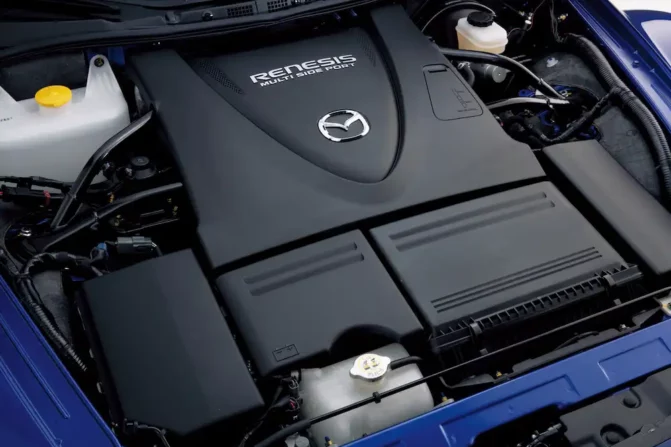



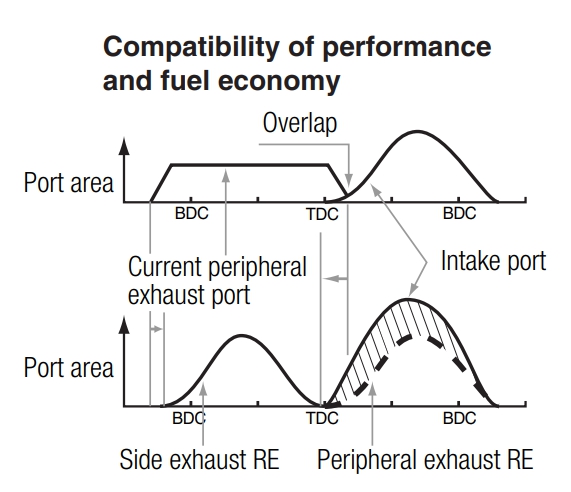
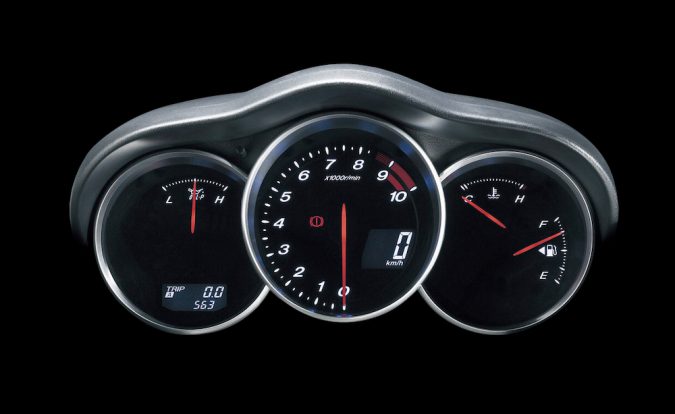


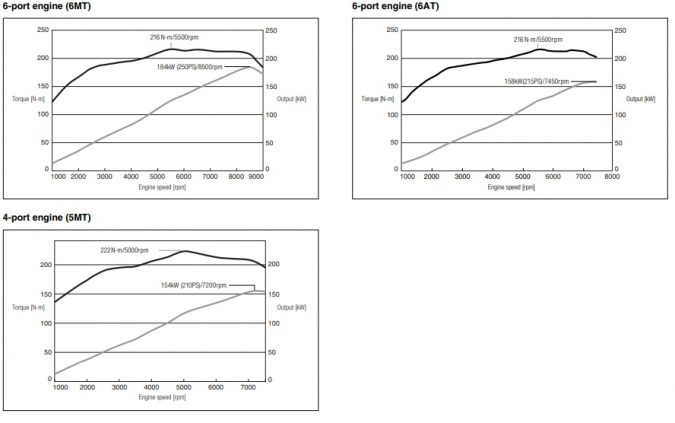
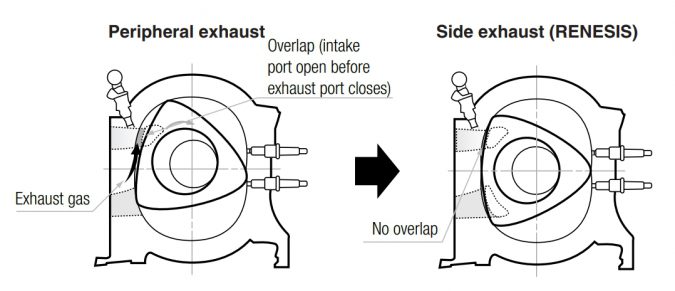
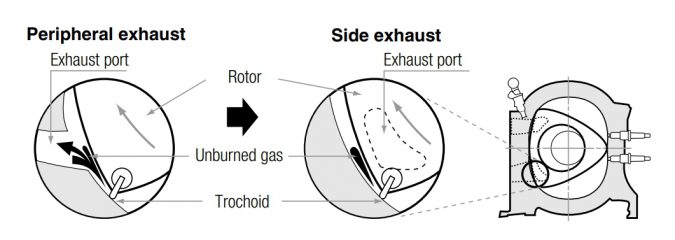
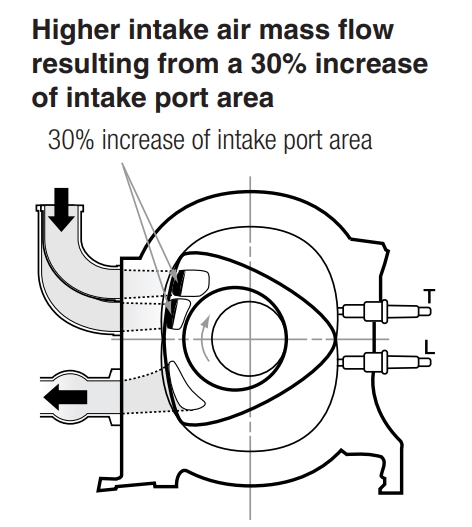
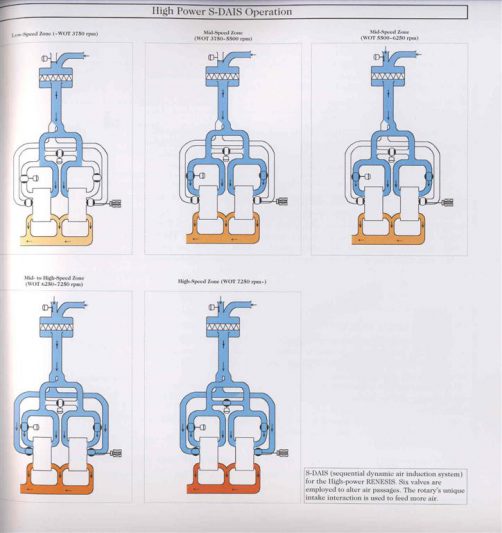
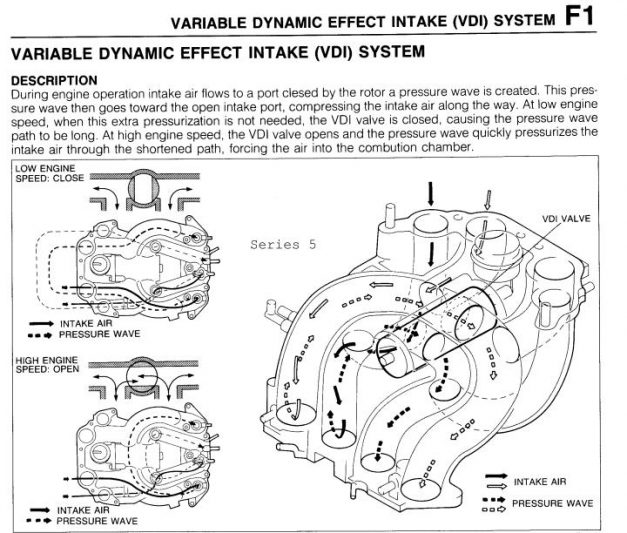
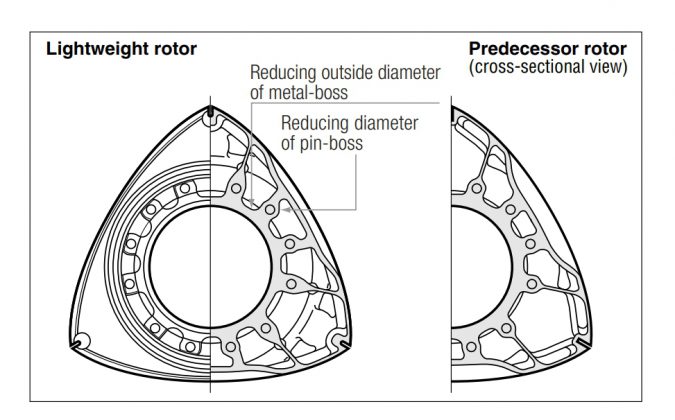
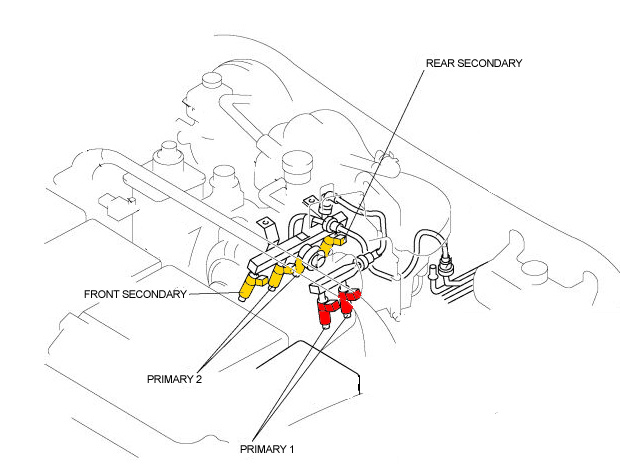
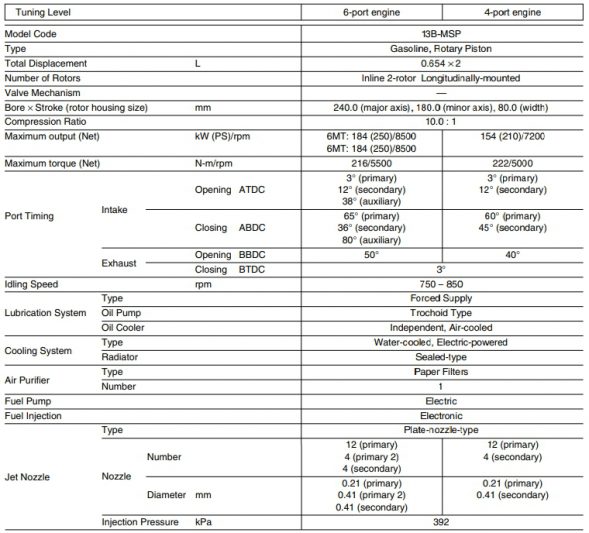




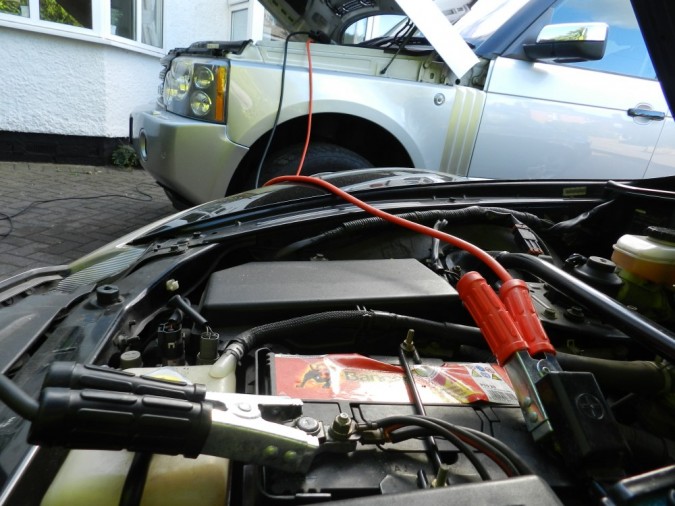

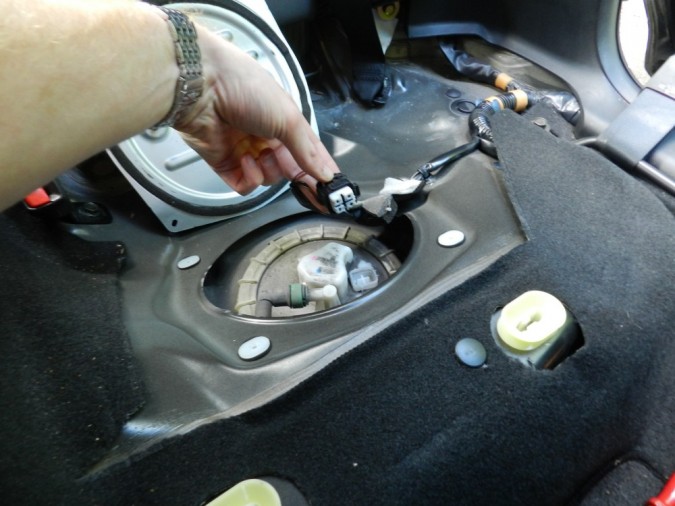
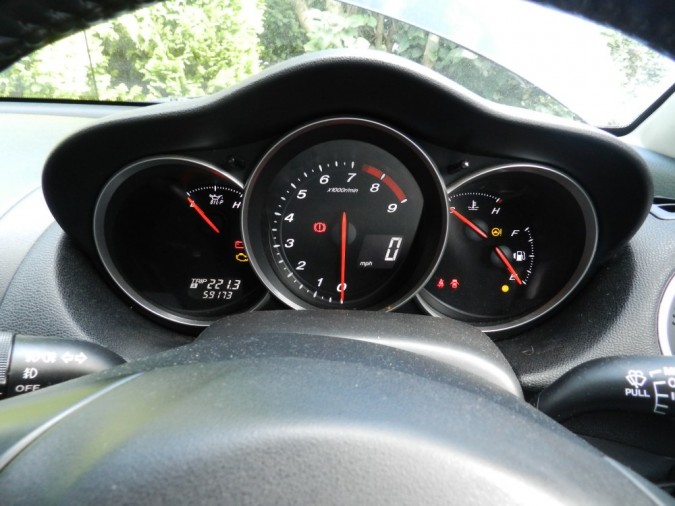



I’M GETTING A P0302 MISFIRE #2. WHICK BANK OF PLUGS ARE CONSIDERED BANK OR CYLINDER #2
Hi William,
In the Mazda RX-8 engine, which features a Wankel rotary engine, there isn’t a traditional “bank” of cylinders as you would find in a piston engine. Instead, rotary engines have a unique design where the rotor housing contains chambers (usually two) that perform the combustion process. These chambers can be referred to as “rotors” rather than cylinders.
If you’re getting a P0302 misfire code indicating a misfire in #2, it typically means there’s an issue with one of the rotors in the second chamber. In the rotary engine of the Mazda RX-8, the rotor housing is divided into two chambers: front and rear. The rotor in the front chamber is known as the “leading” rotor, while the rotor in the rear chamber is known as the “trailing” rotor.
So, in this context:
– Bank #2 refers to the rear chamber.
– Cylinder #2 refers to the trailing rotor in the rear chamber.
If you’re experiencing a misfire in #2, you may want to inspect and address issues related to the trailing rotor in the rear chamber of the rotary engine. Keep in mind that rotary engines have a different internal layout compared to traditional piston engines, so the terminology and troubleshooting process are unique to them. If you’re not familiar with rotary engines, it’s advisable to seek the assistance of a mechanic or technician experienced with Mazda RX-8 rotary engines to diagnose and resolve the misfire issue effectively.